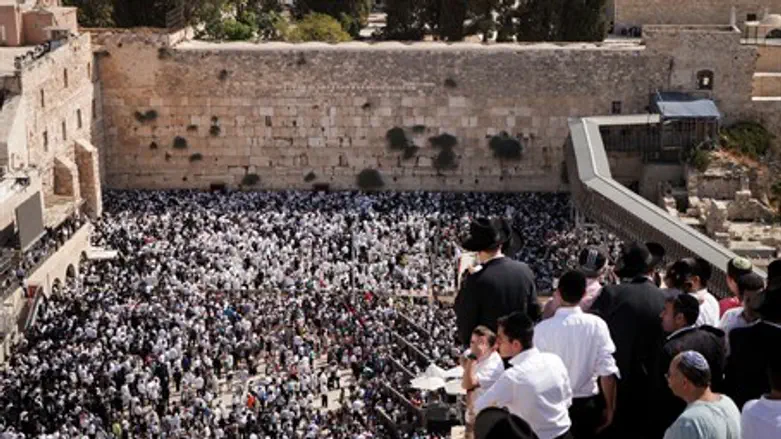
Tens of thousands of Jews from Israel and throughout the world gathered at the Kotel (Western Wall) plaza Wednesday morning for the Birkat Kohanim (Priestly Blessing) ceremony, on the third day of Sukkot.
The event commemorates the Priestly Blessings given by the kohanim (Jewish priests) in the holy Temple in Jerusalem, before its destruction in 70 CE, and is one of the highlights of the Jewish calendar.
The Kotel itself is one of the retaining walls of the Temple Mount, and has been revered as a Jewish place of worship for centuries, mainly due to bans leveled by Christian and Muslim occupying forces forbidding Jews from setting foot on the Temple Mount plaza above - Judaism's holiest site.
But, as with the Temple Mount, the Palestinian Authority and Islamist groups have in recent years attempted to deny any Jewish connection to the Wall. In recent decades, some Palestinians have taken to calling it the "Al-Buraq Wall," claiming it is where Mohammed tethered his mythical winged horse, Al-Buraq, which according to Muslim legend flew him up to heaven.
There is however no Koranic or other mainstream Islamic source to back that narrative.
And it appears that Palestinian Arab media outlets are taking a leaf out of their leaders' books. Reporting on the Birkat Kohanim ceremony - and in an echo of daily reports of Jews "daring" to visit the Temple Mount - the Palestinian Press Agency's headline blared: Tens of thousands of Jews and rabbis desecrate Buraq Square.
The article claimed that "tens of thousands of Jews and rabbis" gathered in the square to take part in "Talmudic rituals" - another vaguely sinister-sounding term often used to describe Jewish visits to the Temple Mount (without praying, which is banned for Jews on the Mount).
Watch: Birkat Kohanim at the Kotel